17 BBB
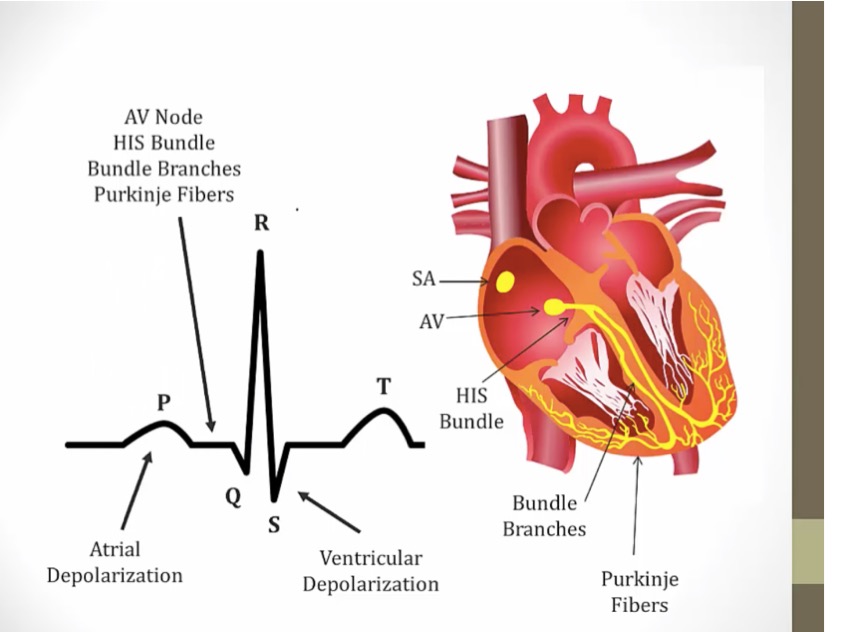
- AP can only go from SA to ventricle from AV node
- PR: electrical activity pass through all these things before ventricular depolarize
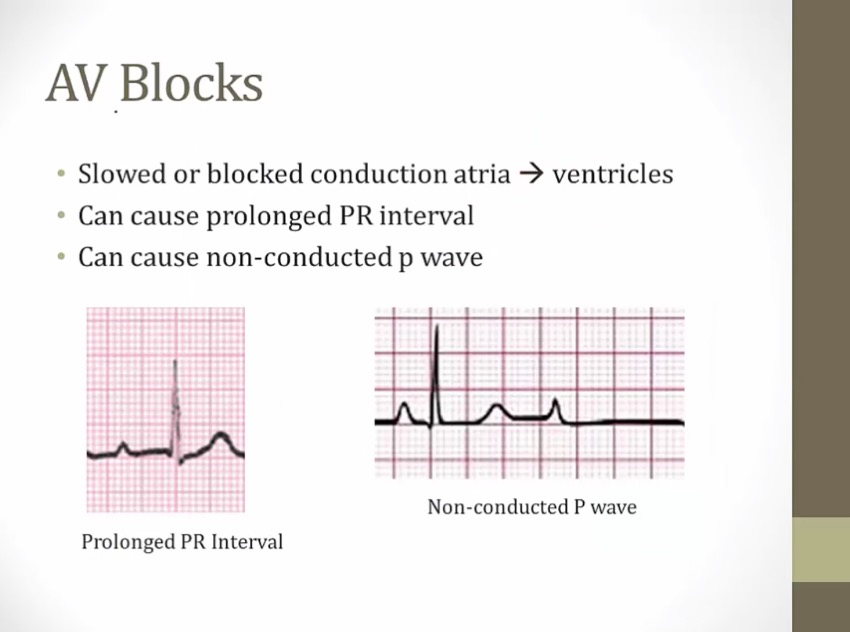
- severe block: does not generate QRS, does not conduct to ventricle
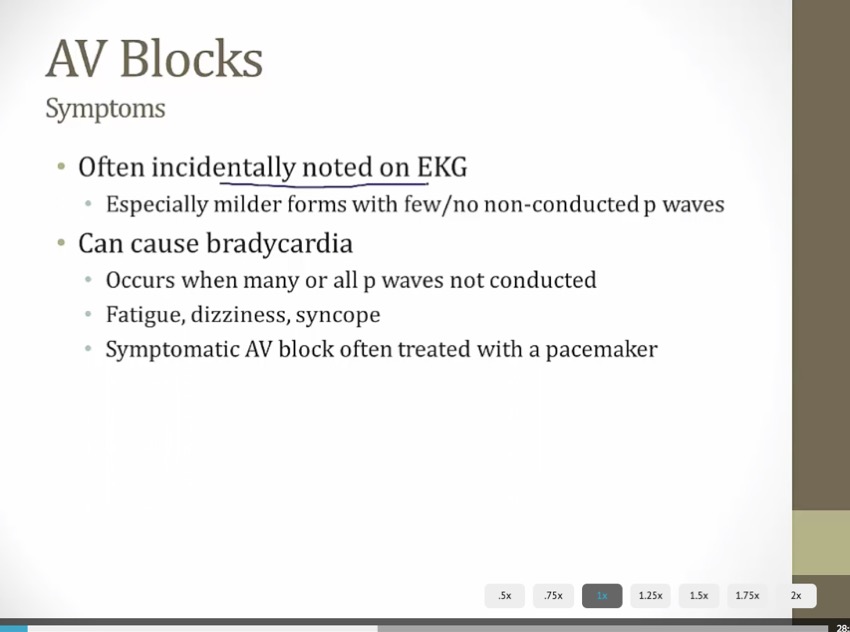
- symptoms: low CO
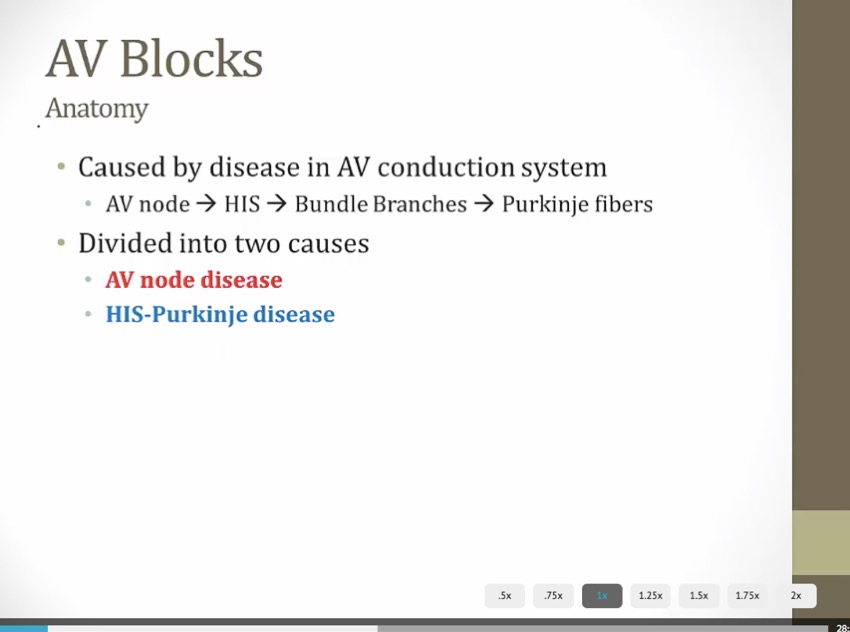
- can be caused by any portion of AV conduction system
- clinically divided into two causes
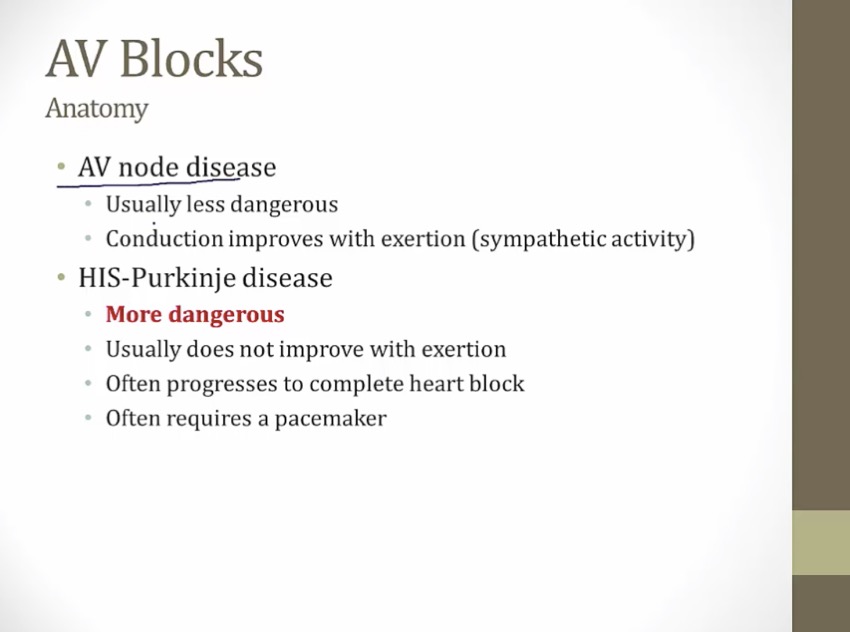
- AV node: fewer dropped beats, less bradycardia, improve with exertion (increased sympathetic activity)
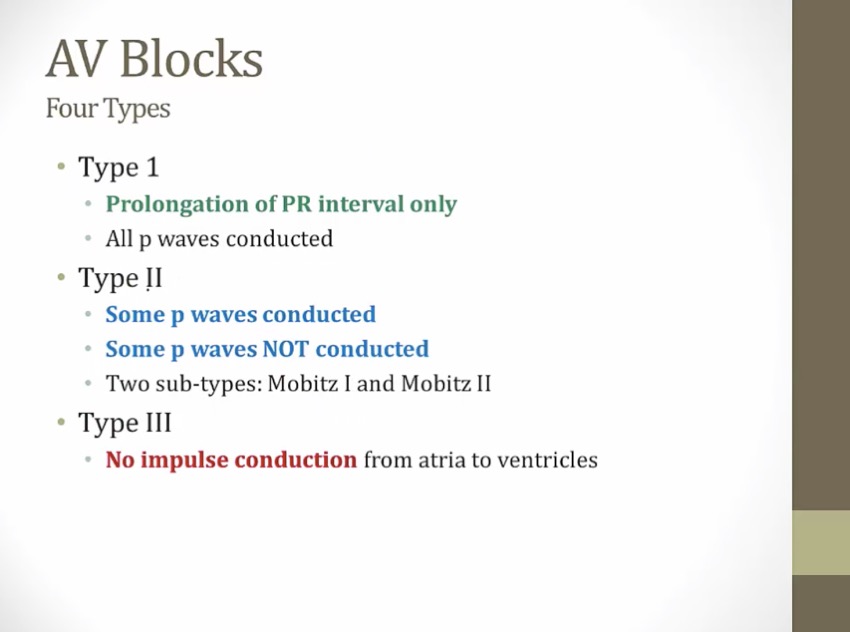
- type 1: no dropped beats
1st Degree

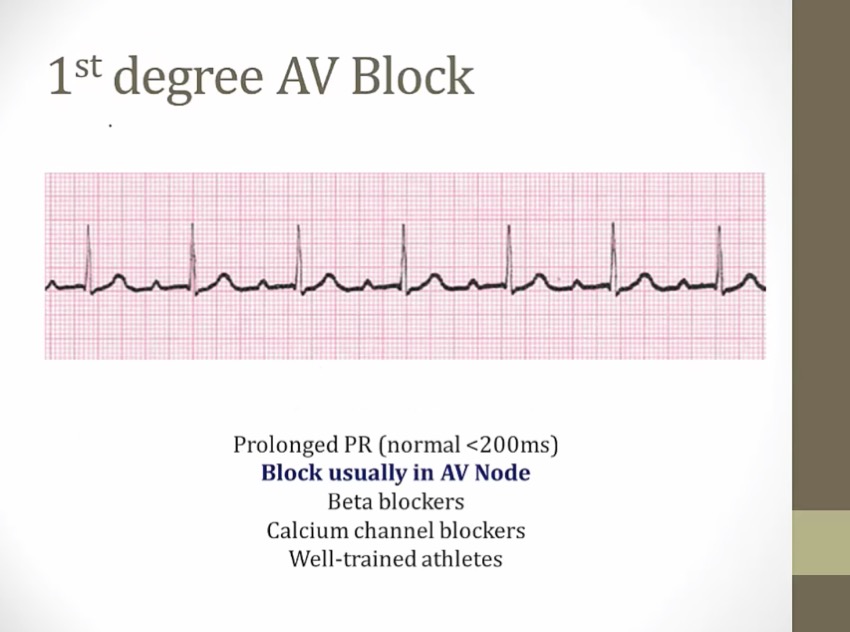
- should be under 1 box
- all followed by QRS
- AV node: good prognosis
- atheletes: high parasympathetic tone
- no symptoms for condition. All P conducted, no bradycardia
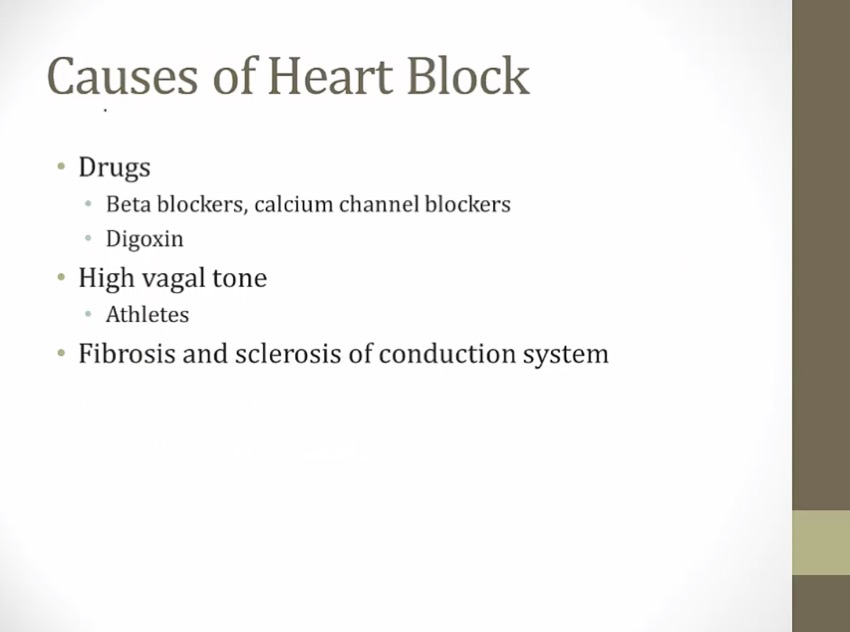
- fibrosis: occurs with aging. Older pts have advanced types of AV block, pacemaker
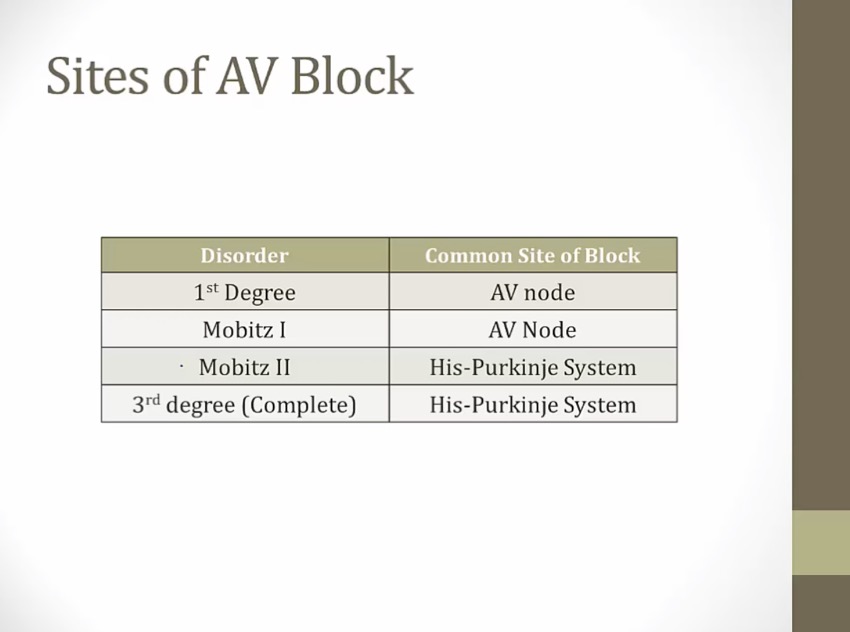
2nd Degree
Mobitz 1
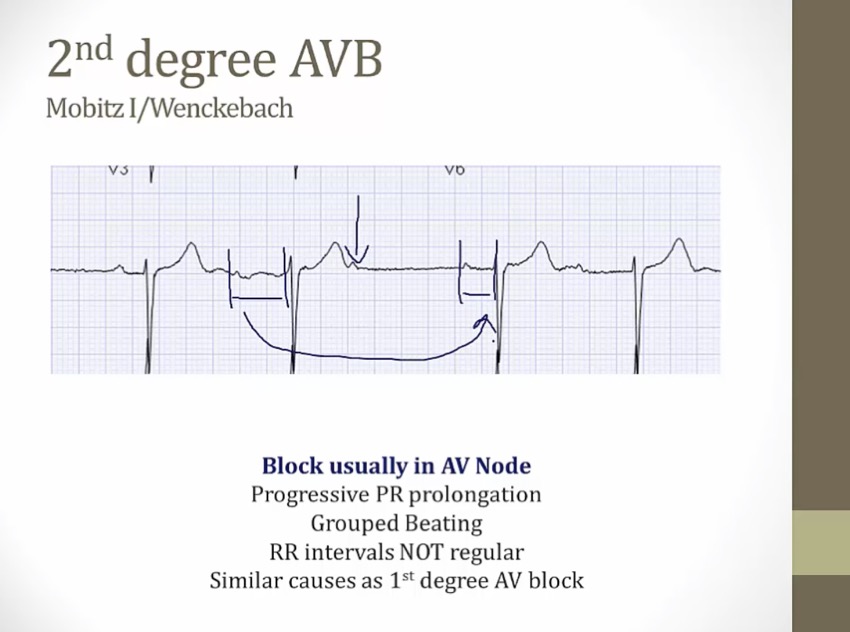
- like 1st degree, but gets worse with each beat until no conduction
- find non-conducted P, find one before and one after, see length differences
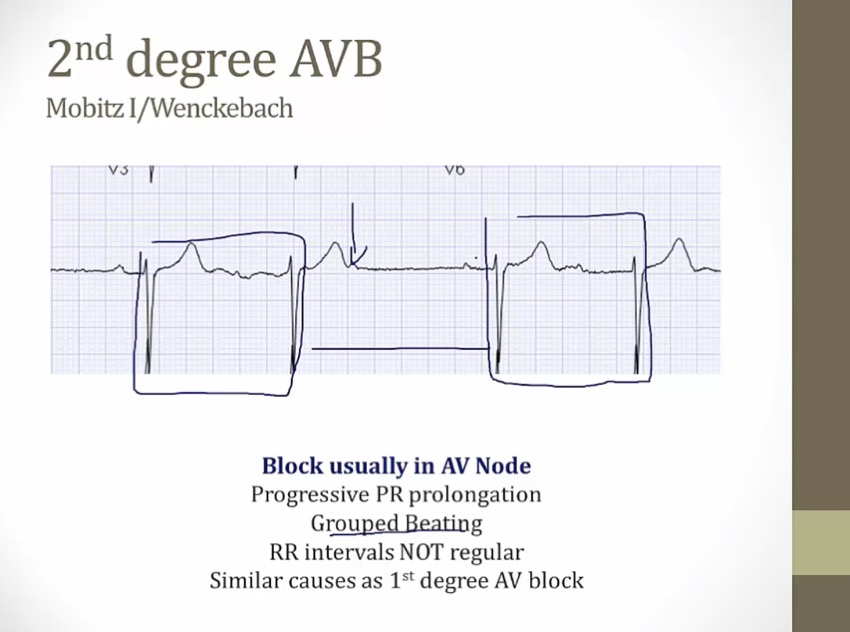
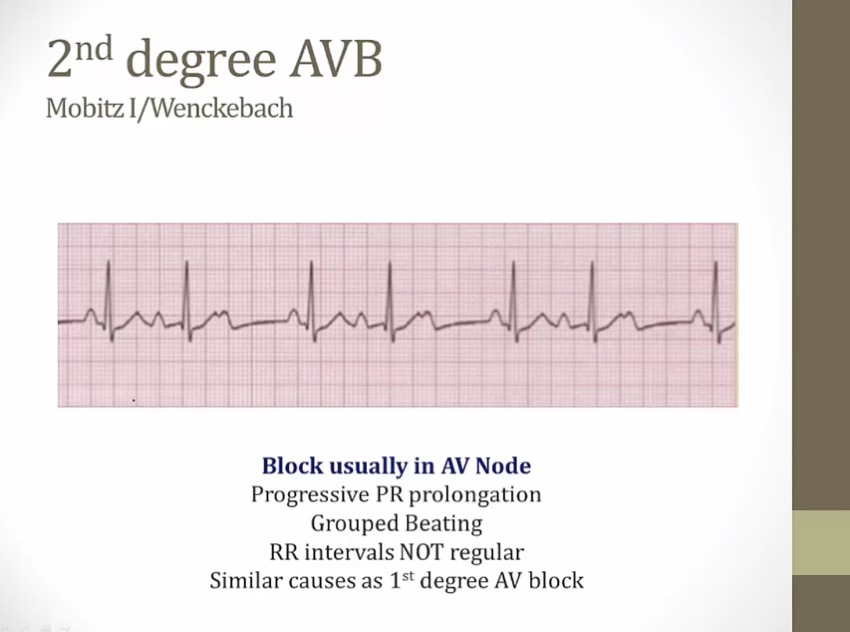
- BB, CCB, atheletes
- regularly irregular pulse, different from afib
- asymptomatic, goes away with exertion
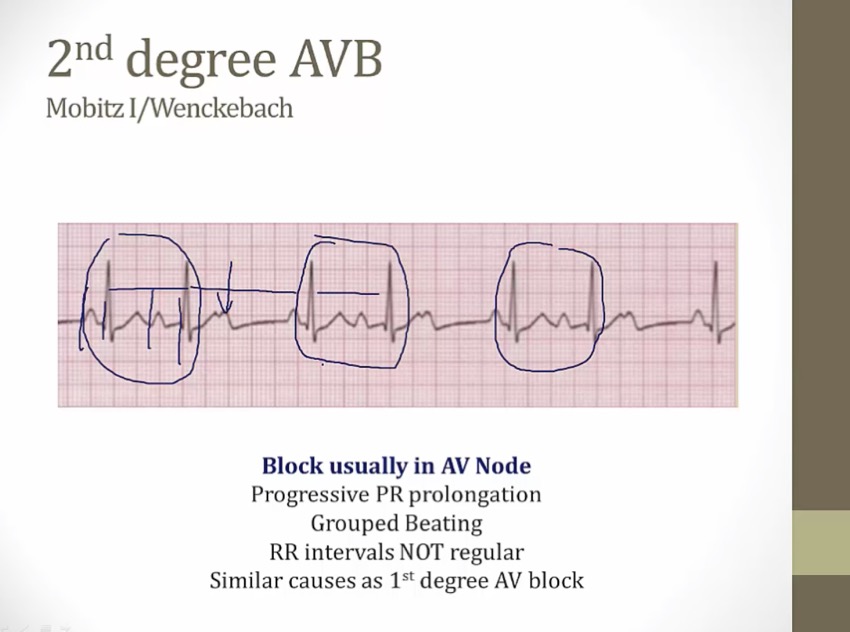
- different lengthed PR
- grouped beating
- irregular RR interval

- fibrosis: occurs with aging. Older pts have advanced types of AV block, pacemaker

Mobitz II
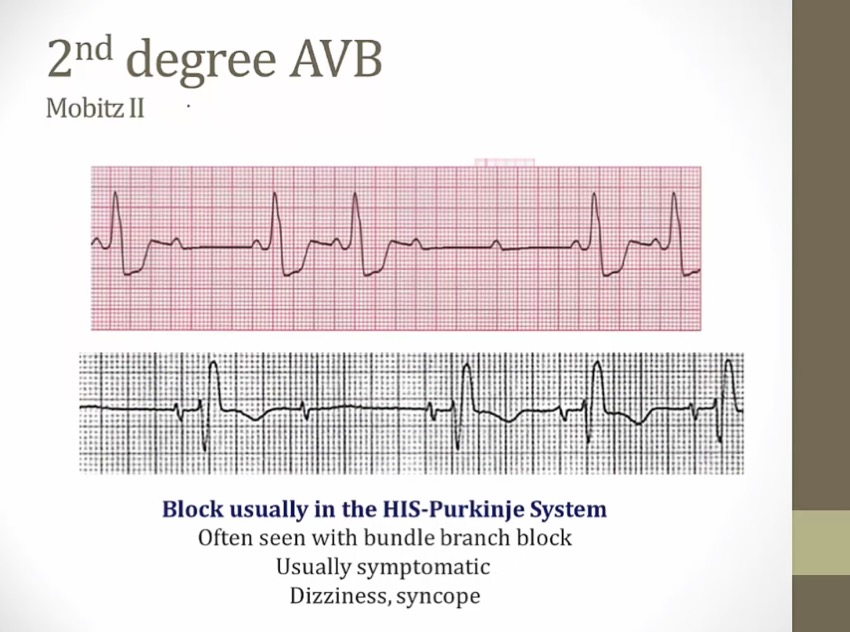
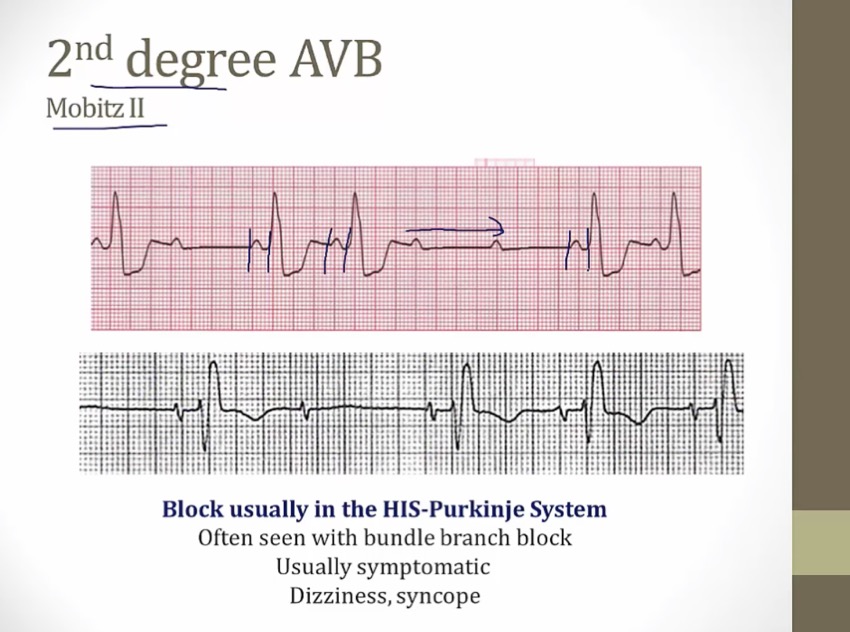
- no progressive prolongation: 2 conducted P, same length, then 2 non conducted P
- HIS purkinje: hanging on barely, can conduct 2, then can't conduct for next 2
- high risk to complete heart block
- often with BBB: HIS purkinje includes BB, wide QRS

3rd Degree

- no conduction from A to V
- some lower rate pacemaker in AV or V depolarizing the V at slower rate
- may look similar to Mobitz type 1, difference: RR interval completely regular
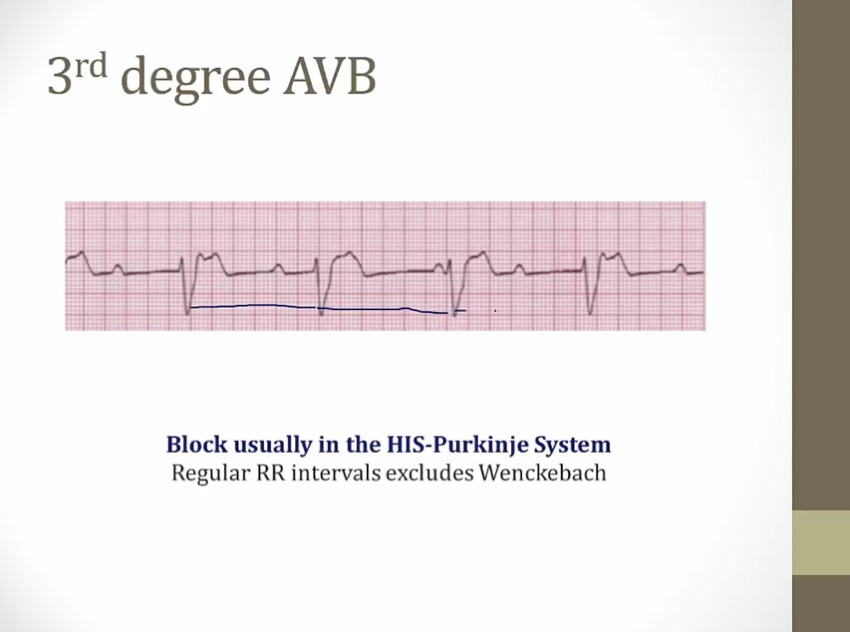
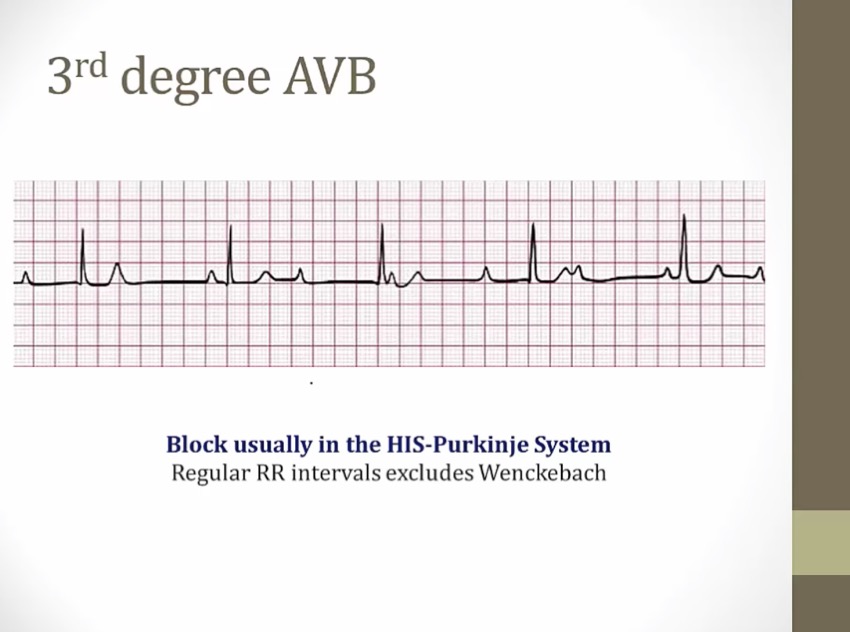
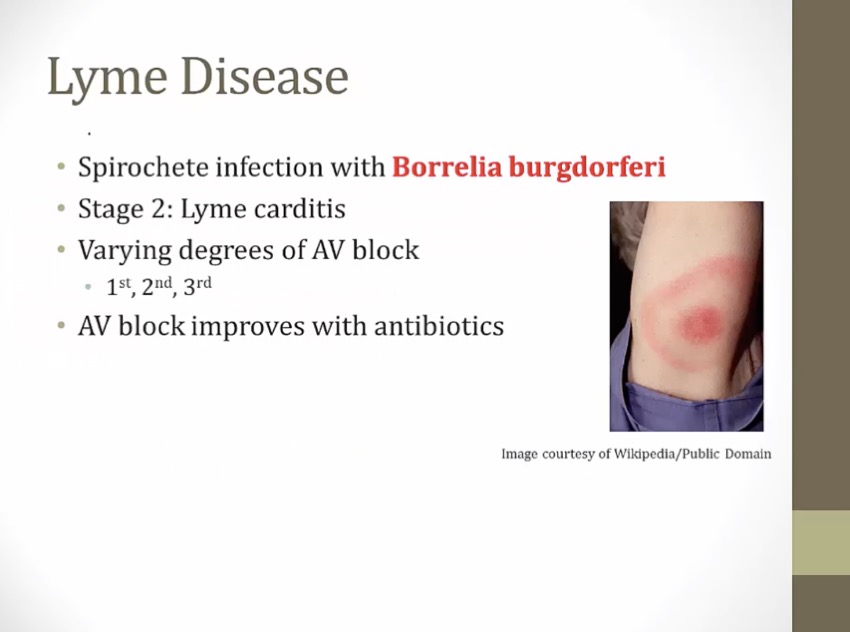
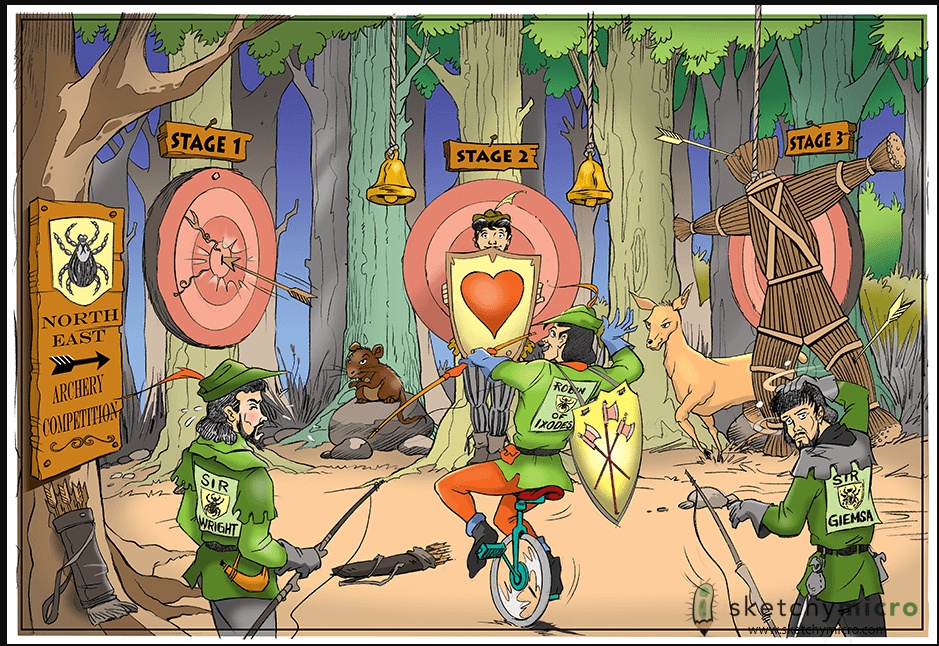
stage 2:
- heart shield: Heart block caused by Myocarditis
- bells on both side: Bilateral Bell's palsy

AV Dissociation

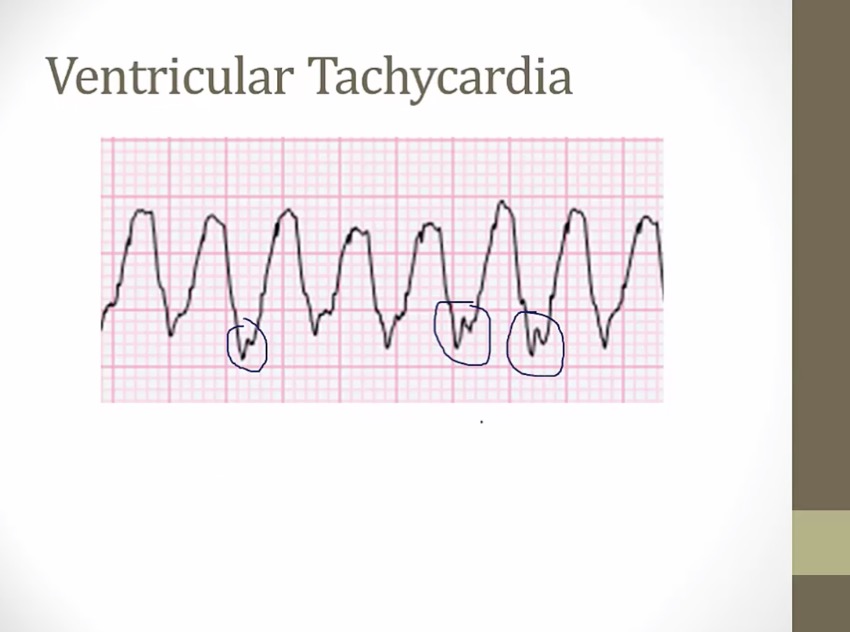
- AV dissociation but still has P, not caused by AV block
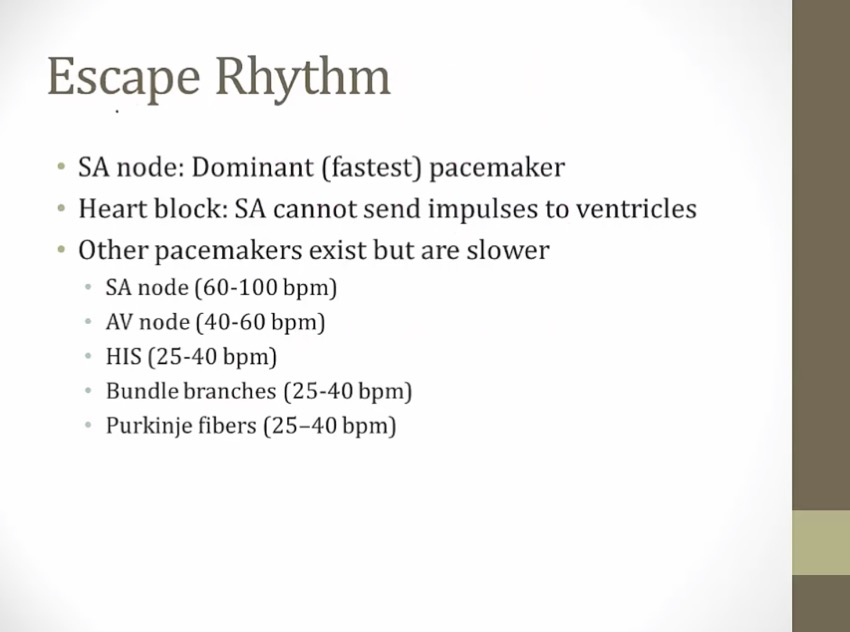
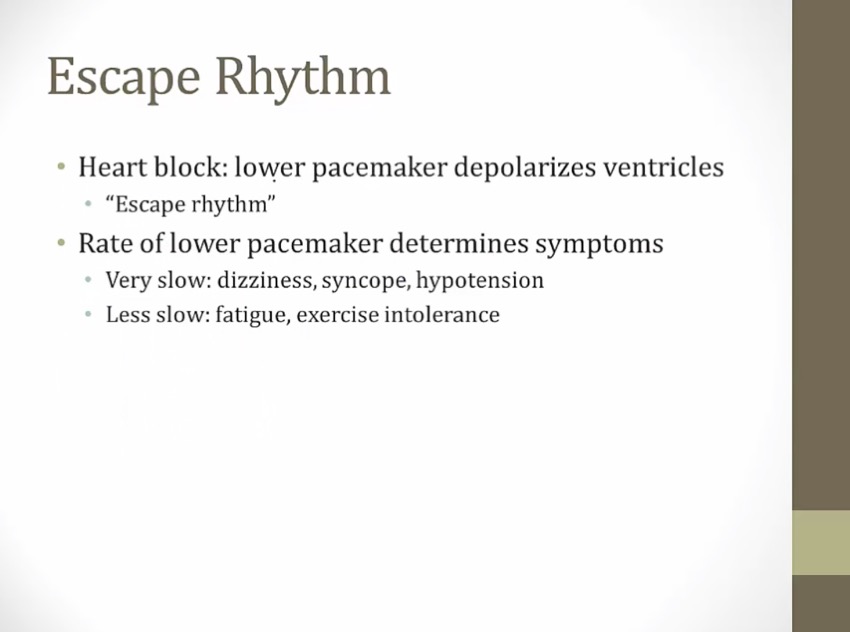
- escape rhythm generated by lower pacemaker
- lower pacemaker cannot increase rate like SA
Pacemaker
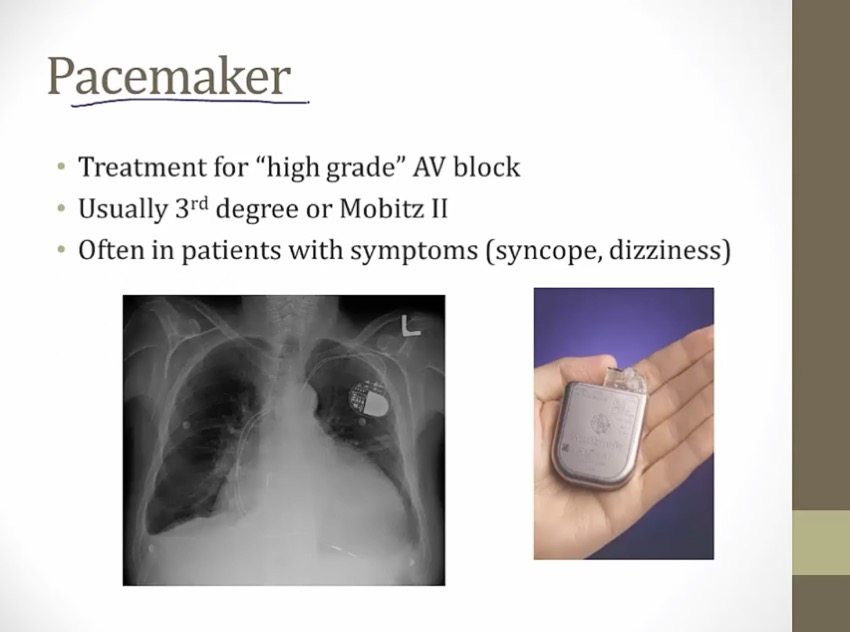
BBB
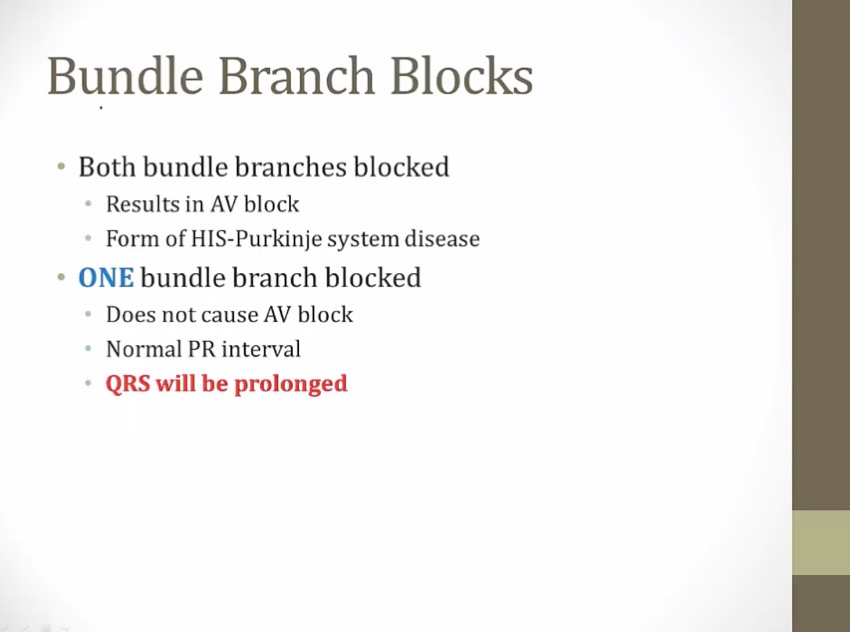
- when AP reach BB, one is not blocked, starts QRS on time (normal PR) but take longer to depolarize (wide QRS)
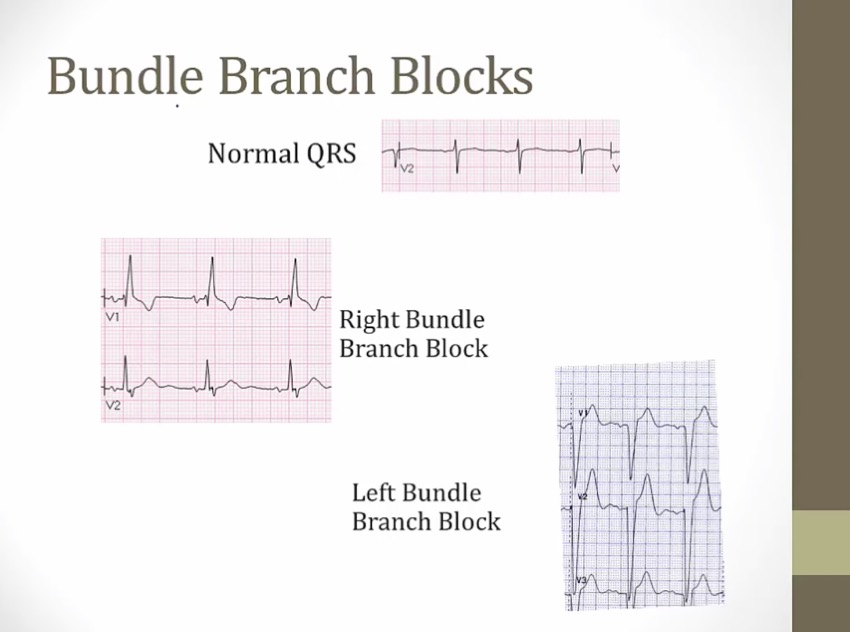
- RBBB: V1 pointing up
- LBBB: V1 pointing down
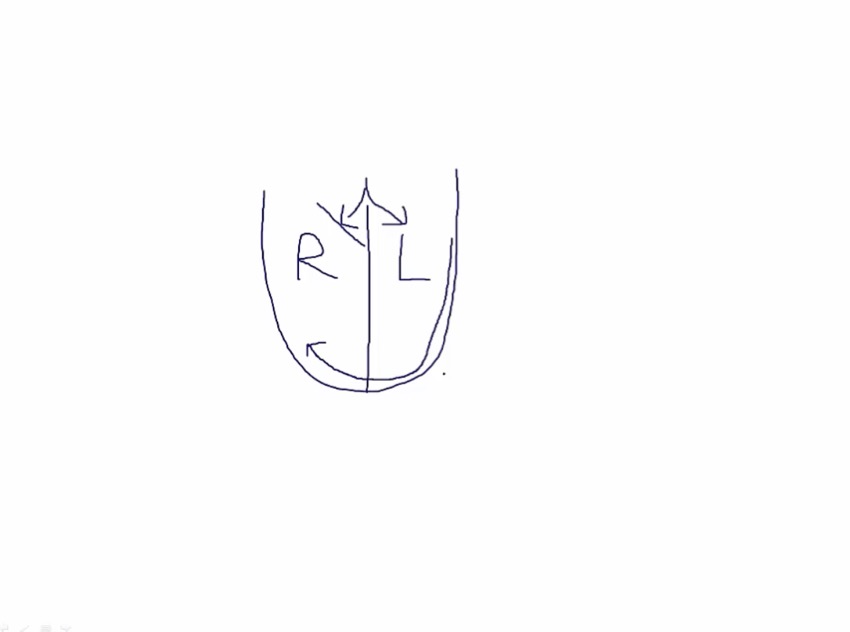
- RBBB: impulse travels to left, depolarize, then send electricity slowly to RV, takes longer, thus prolonged QRS
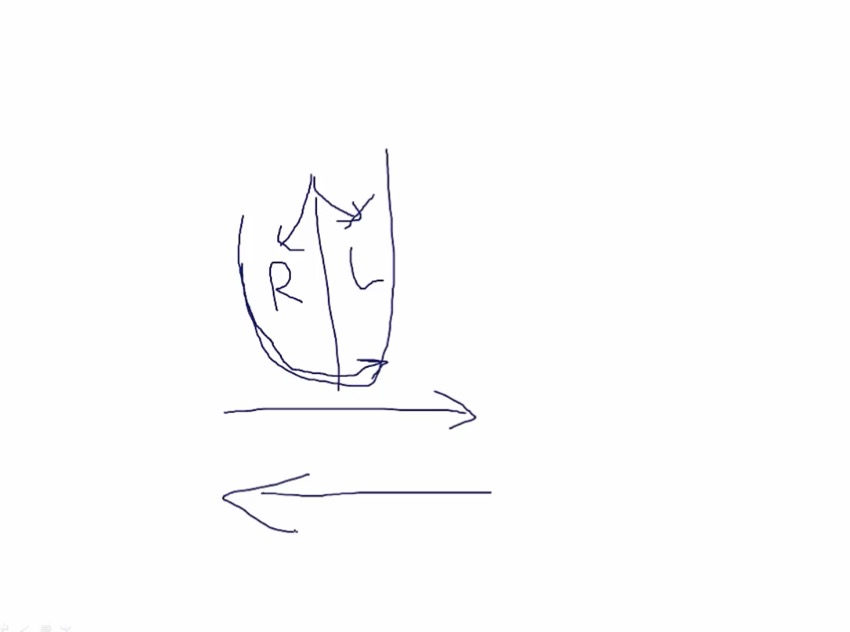
- LBBB: electrical activity go towards left, away from V1, negative V1
- RBBB: go towards right, towards V1, positive V1
- result: different QRS
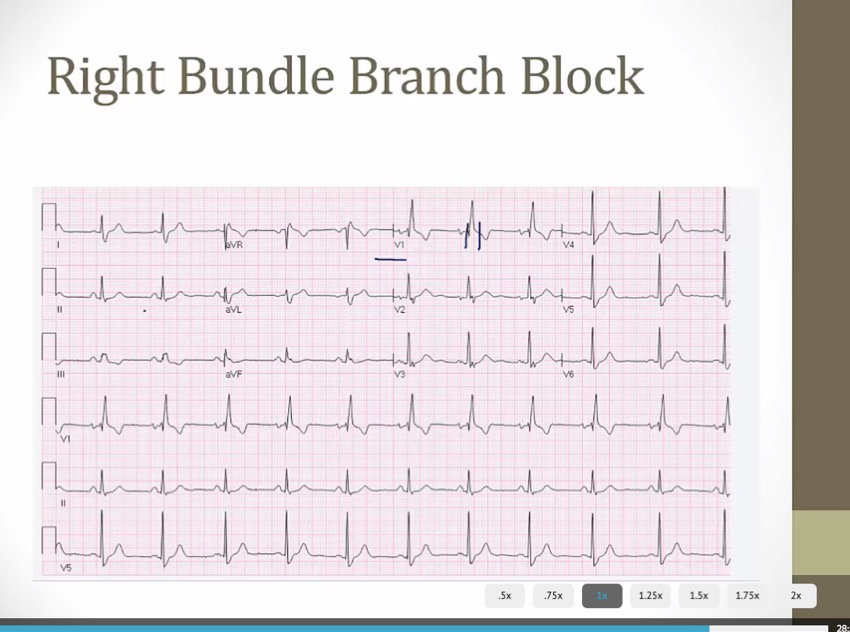
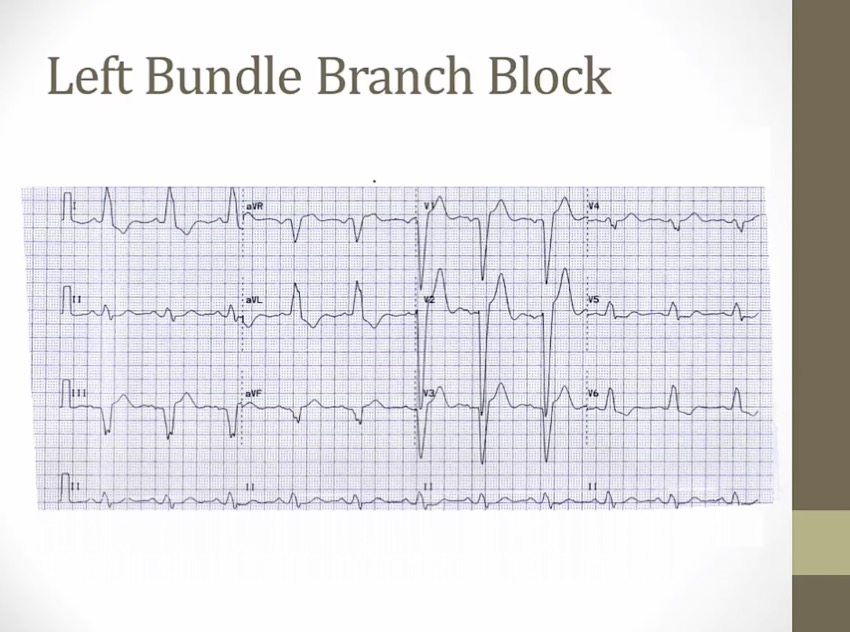
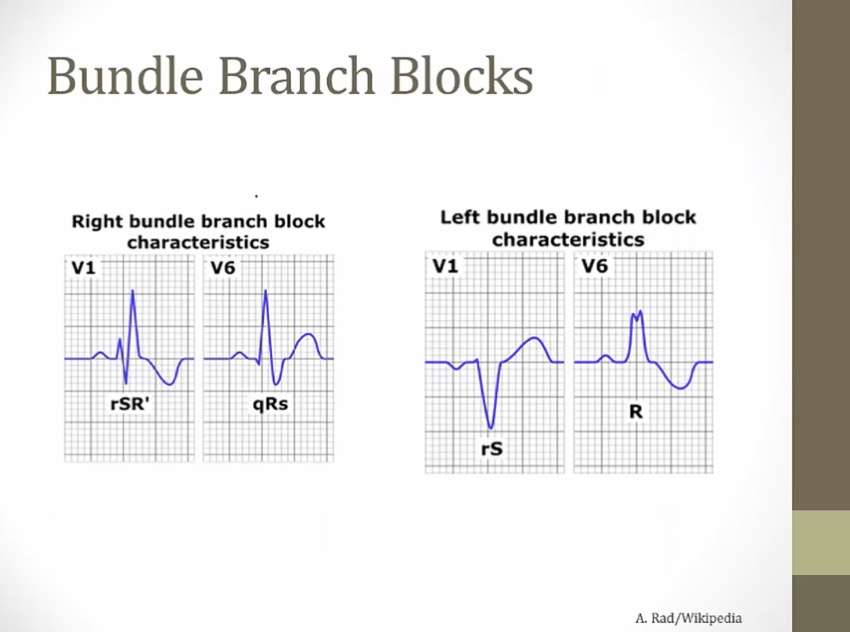
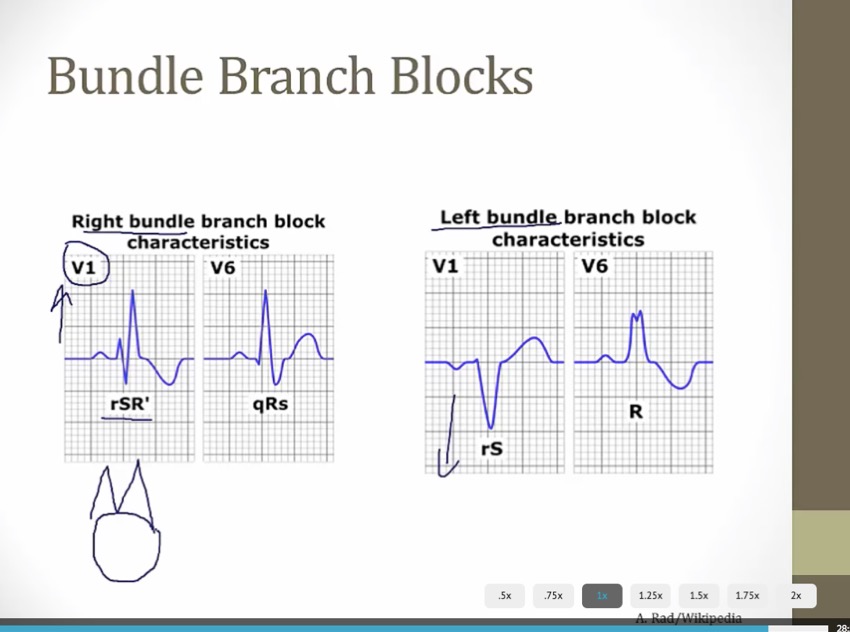
- rSR': rabbit ears
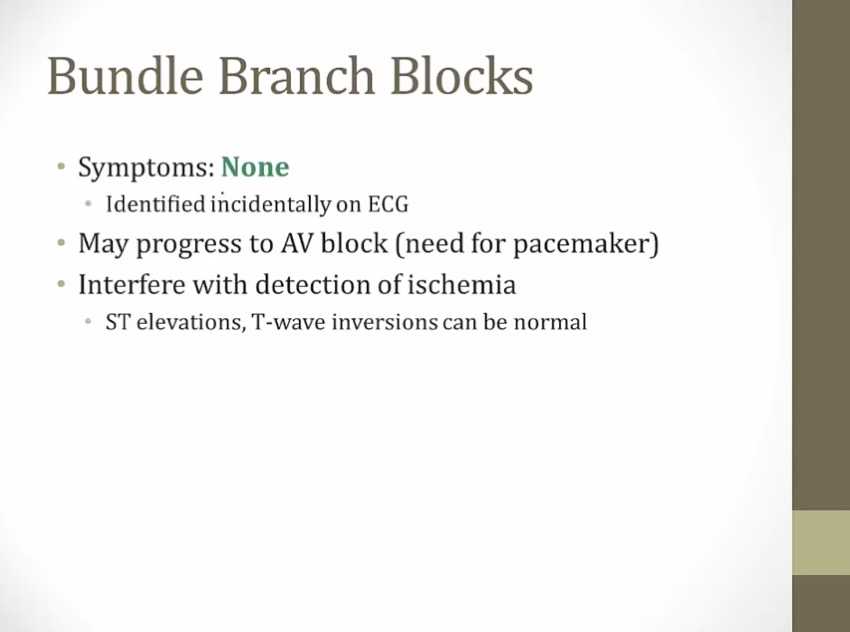
- underlying structural problems that may cause problems
- biggest problem: interfere with ischemia detection
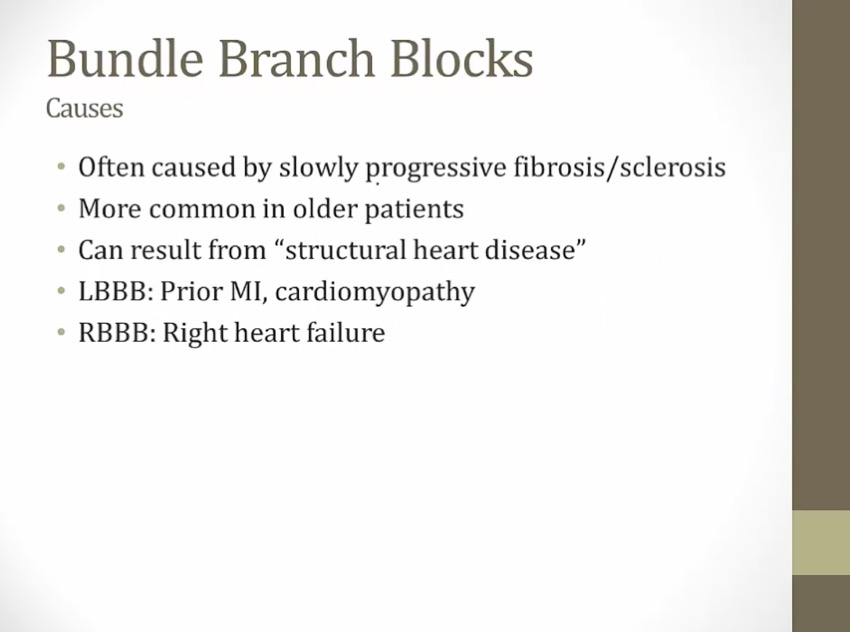
- underlying diseases that can result in BBB